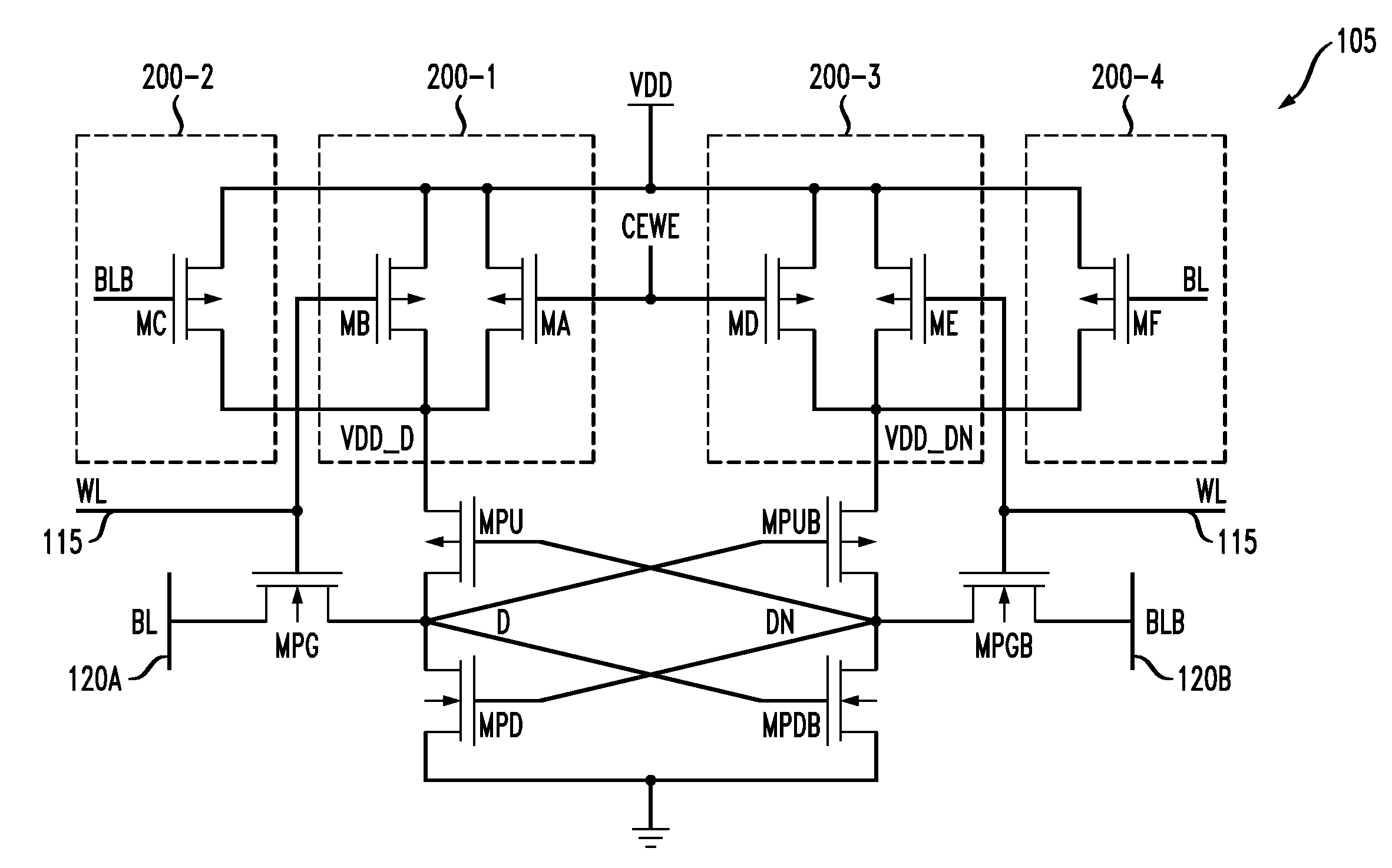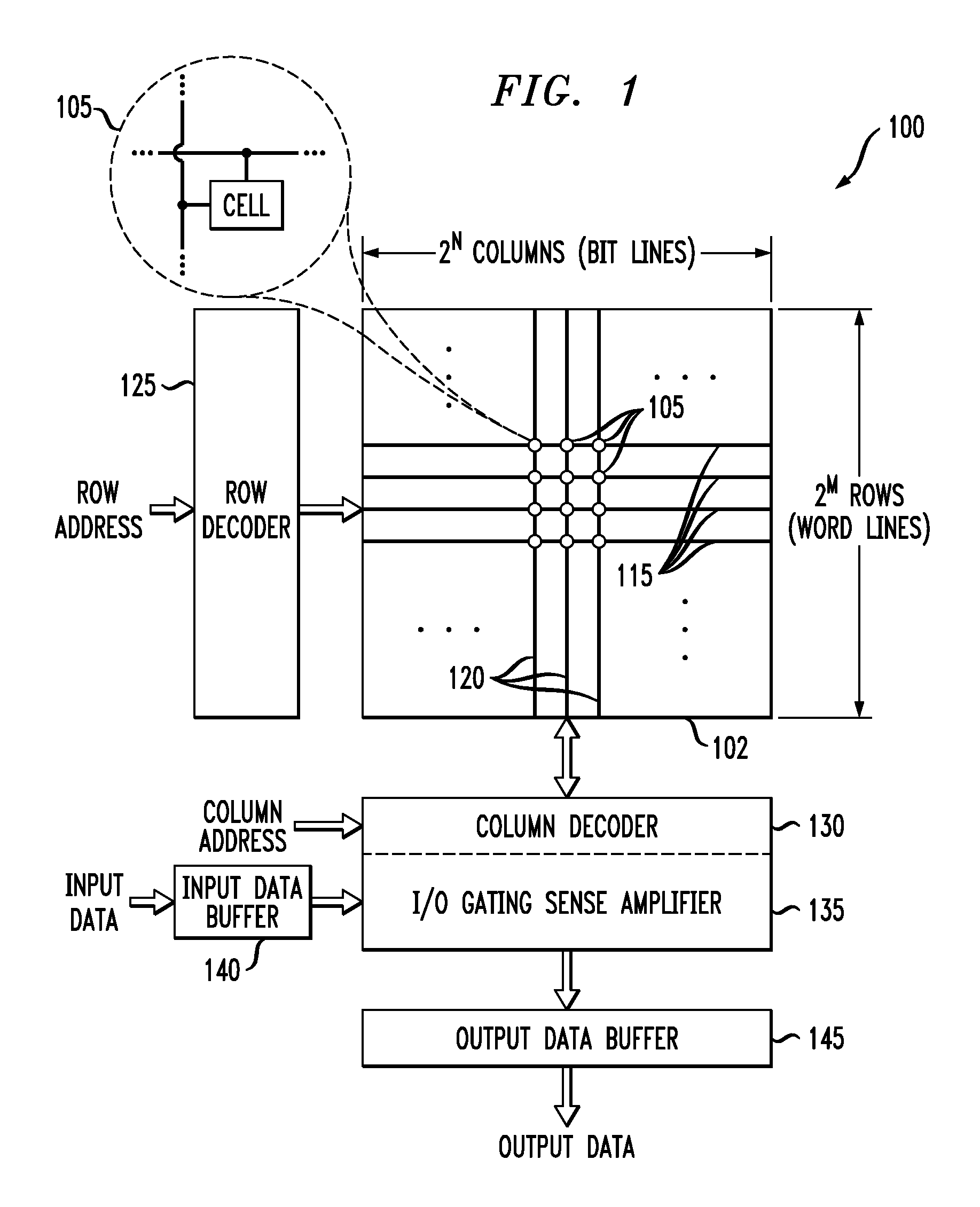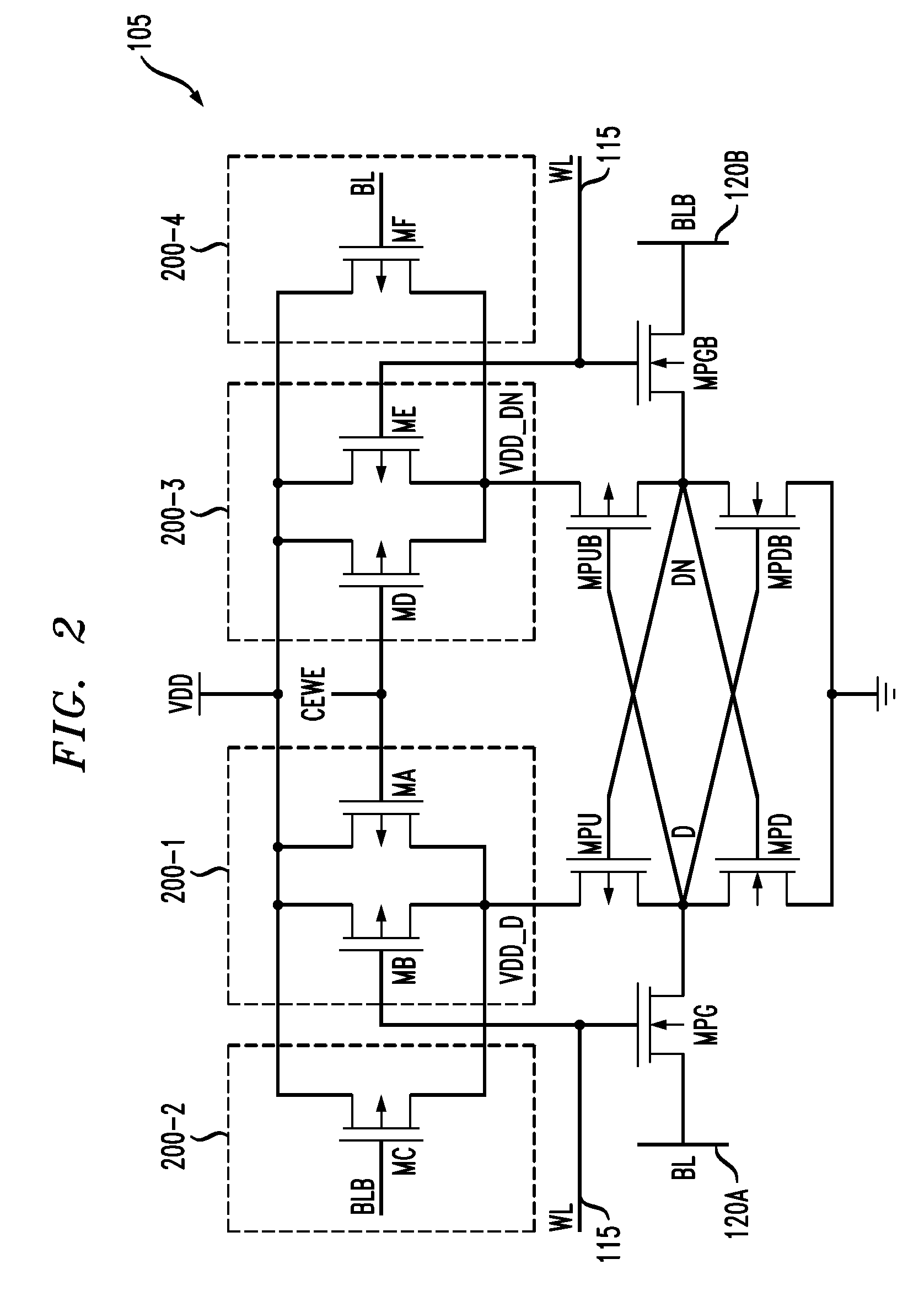Memory device having memory cells with enhanced low voltage write capability
a memory device and write capability technology, applied in the field of semiconductor memory devices, can solve the problems of adversely affecting the performance of the memory device, and unable to prevent local mismatch between the memory, etc., and achieve the effect of accurate low voltage write performan
- Summary
- Abstract
- Description
- Claims
- Application Information
AI Technical Summary
Benefits of technology
Problems solved by technology
Method used
Image
Examples
Embodiment Construction
[0024]The invention will be illustrated herein in conjunction with exemplary semiconductor memory devices and associated memory cells as well as other related circuitry. It should be understood, however, that the invention is more generally applicable to any semiconductor memory device in which improved low voltage write performance is desired, and may be implemented using circuitry other than that specifically shown and described in conjunction with the illustrative embodiments.
[0025]FIG. 1 shows a simplified diagram of a memory device 100 in accordance with an illustrative embodiment of the invention. The memory device 100 comprises a memory array 102. The memory array 102 comprises a plurality of memory cells 105 each configured to store data. For example, the memory cells may each be configured to store a single bit of data, and such memory cells are also referred to herein as bit-cells. Each cell 105 is coupled to a corresponding row or wordline 115 and column or bitline 120. T...
PUM
 Login to View More
Login to View More Abstract
Description
Claims
Application Information
 Login to View More
Login to View More - R&D
- Intellectual Property
- Life Sciences
- Materials
- Tech Scout
- Unparalleled Data Quality
- Higher Quality Content
- 60% Fewer Hallucinations
Browse by: Latest US Patents, China's latest patents, Technical Efficacy Thesaurus, Application Domain, Technology Topic, Popular Technical Reports.
© 2025 PatSnap. All rights reserved.Legal|Privacy policy|Modern Slavery Act Transparency Statement|Sitemap|About US| Contact US: help@patsnap.com



